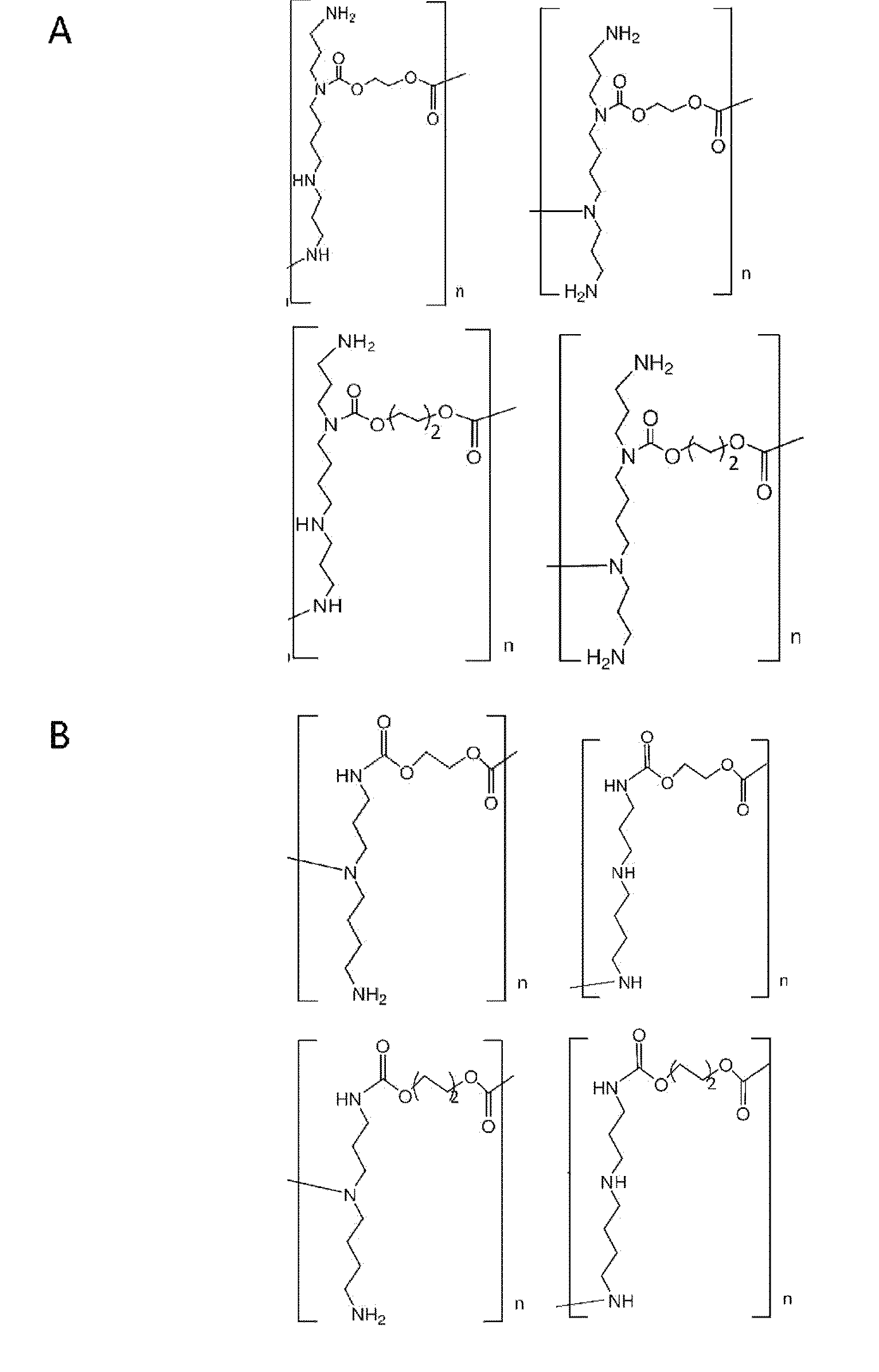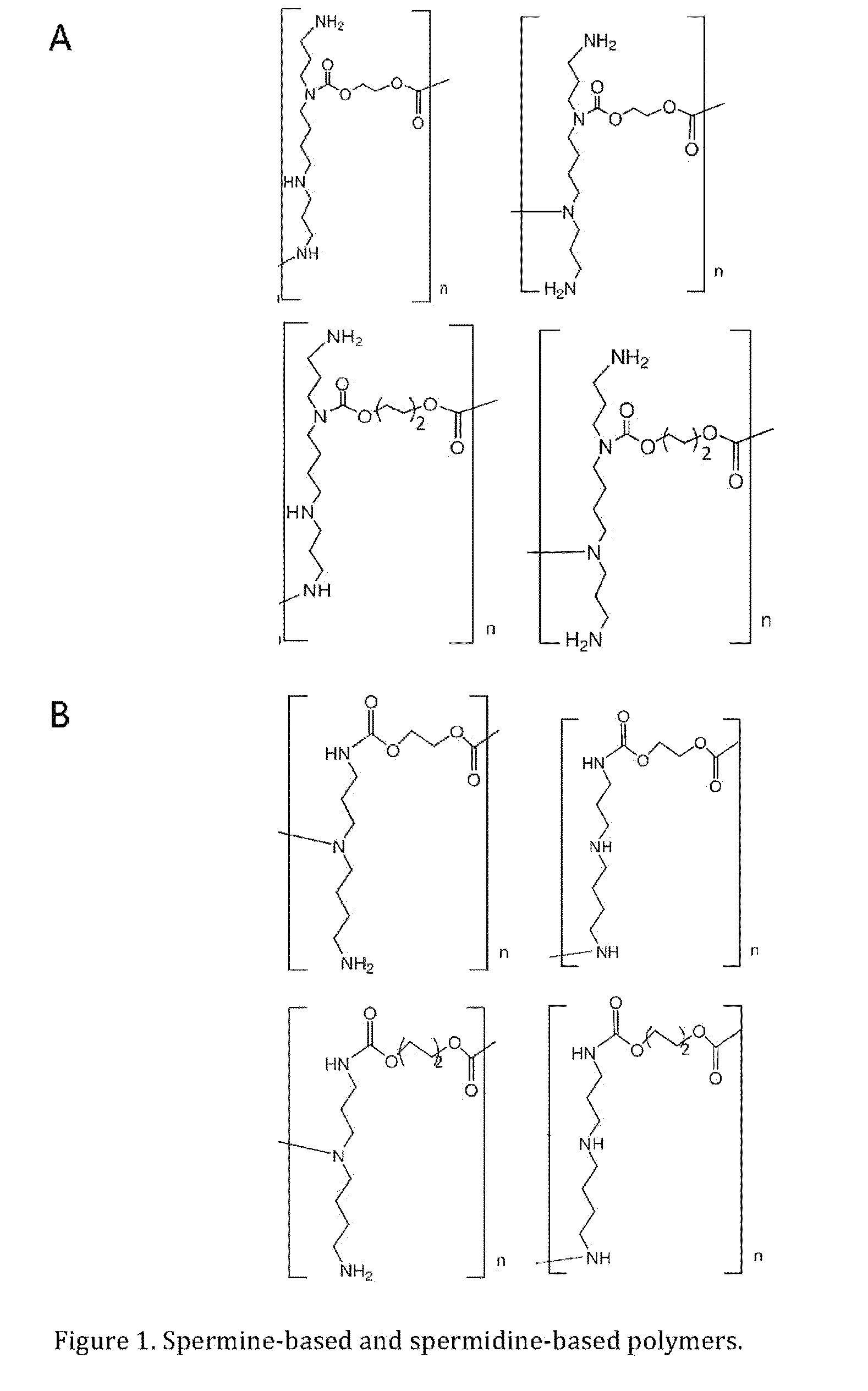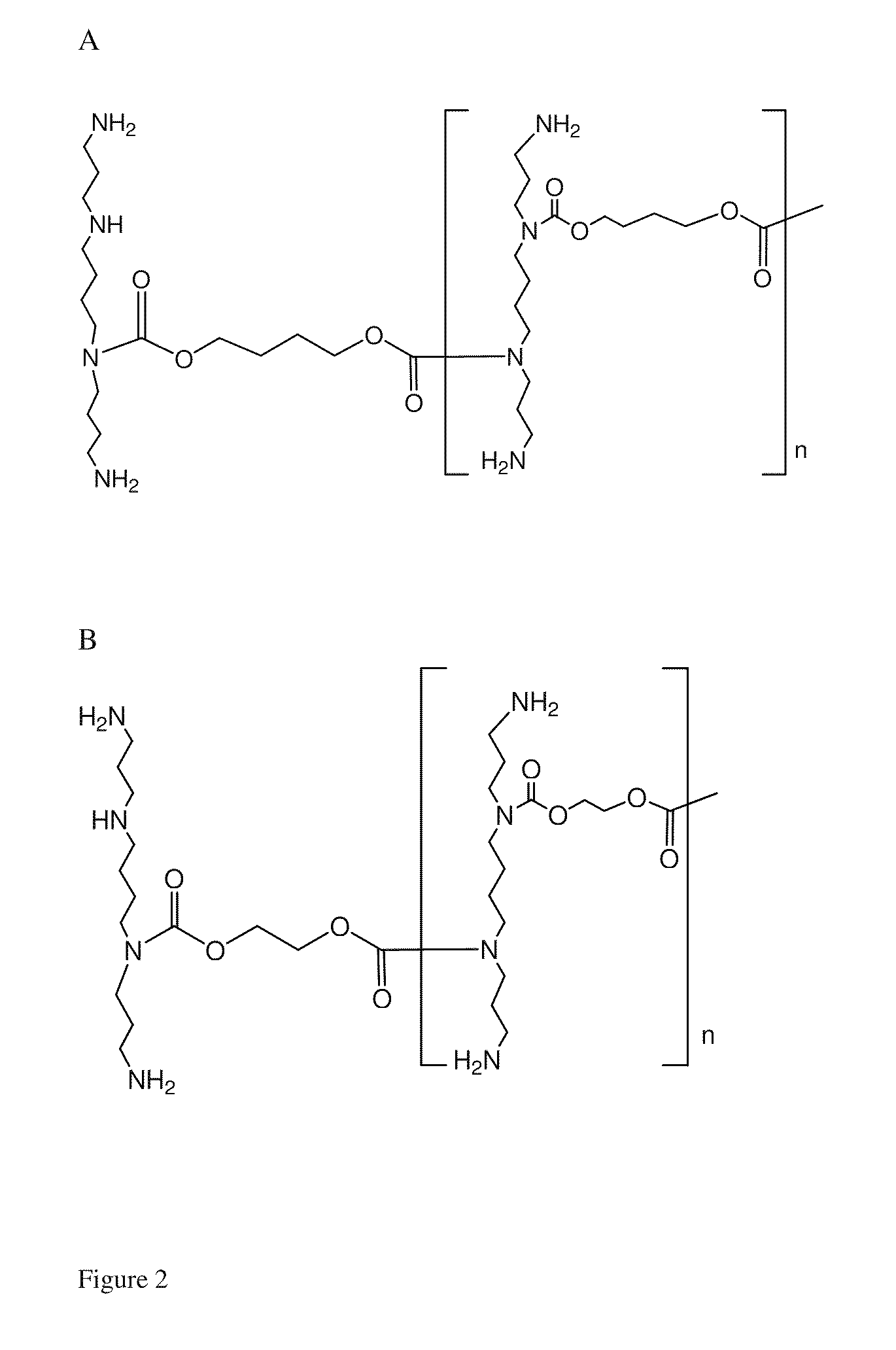Polycationic gene carriers formed of endogenous amino group-bearing monomers
- Summary
- Abstract
- Description
- Claims
- Application Information
AI Technical Summary
Benefits of technology
Problems solved by technology
Method used
Image
Examples
example 1
Synthesis of Polyspermine Carbamate (See FIGS. 1a and 1b)
[0045]To polymerize spermine via carbamate linkage, 1 equivalent of ethylene bischloroformate or 1,4-butanyl bischloroformate dissolved in chloroform was added dropwise to a stirring solution of spermine dissolved in chloroform and triethylamine at 0° C. under a nitrogen stream. The solution was then warmed up to room temperature and stirred for 12 h. After removal of the solvent by evaporation, the obtained polymer pellet was dissolved in water and dialyzed to remove fragments with molecular weight of less than 3500. The final product was stored at −20° C. after lyophilization.
example 2
Synthesis of Linear Polyspermine Carbamate (See FIGS. 2a and 2b)
[0046]To synthesize linear polyspermine carbamate, the two primary amino groups of the reactant was protected by adding ethyl trifluoracetate to a spermine solution (in methanol) dropwise at −78° C. under a nitrogen stream, followed by continuous stifling at 0° C. for 1 h. The product, N1,N14-bis(trifluoroacetyl)spermine, was obtained after evaporating the solvents, and subjected to the same polymerization steps described in Example 1. After polymerization, the trifluoroacetate group was removed by treating the polymer (dissolved in methanol) with 30 wt % aqueous NH3 solution (in a sealed container) at 60° C. for 8 h. The obtained cationic polymer was then dialyzed to remove small molecular fragments with molecular weight less than 3500.
example 3
Synthesis of Linear Polyspermine Amide (See FIG. 3)
[0047]The reaction procedure for synthesis of linear polyspermine amide was the same as that of polyspermine carbamate, except that 1 equivalent of ethylene bischloroformate or 1,4-butanyl bischloroformate was replaced by 1 equivalent of succinyl chloride.
PUM
| Property | Measurement | Unit |
|---|---|---|
| Biodegradability | aaaaa | aaaaa |
| Interaction | aaaaa | aaaaa |
| Degradation properties | aaaaa | aaaaa |
Abstract
Description
Claims
Application Information
 Login to View More
Login to View More - R&D
- Intellectual Property
- Life Sciences
- Materials
- Tech Scout
- Unparalleled Data Quality
- Higher Quality Content
- 60% Fewer Hallucinations
Browse by: Latest US Patents, China's latest patents, Technical Efficacy Thesaurus, Application Domain, Technology Topic, Popular Technical Reports.
© 2025 PatSnap. All rights reserved.Legal|Privacy policy|Modern Slavery Act Transparency Statement|Sitemap|About US| Contact US: help@patsnap.com



